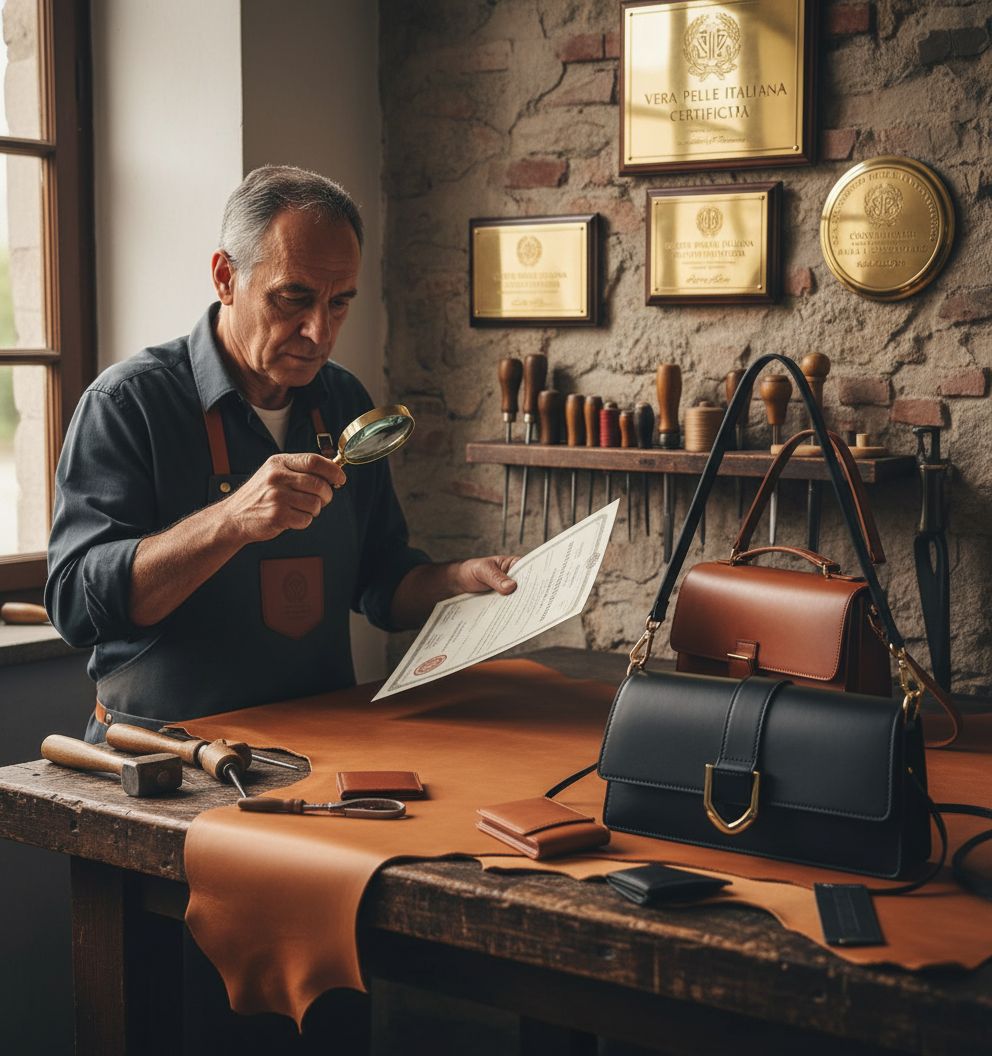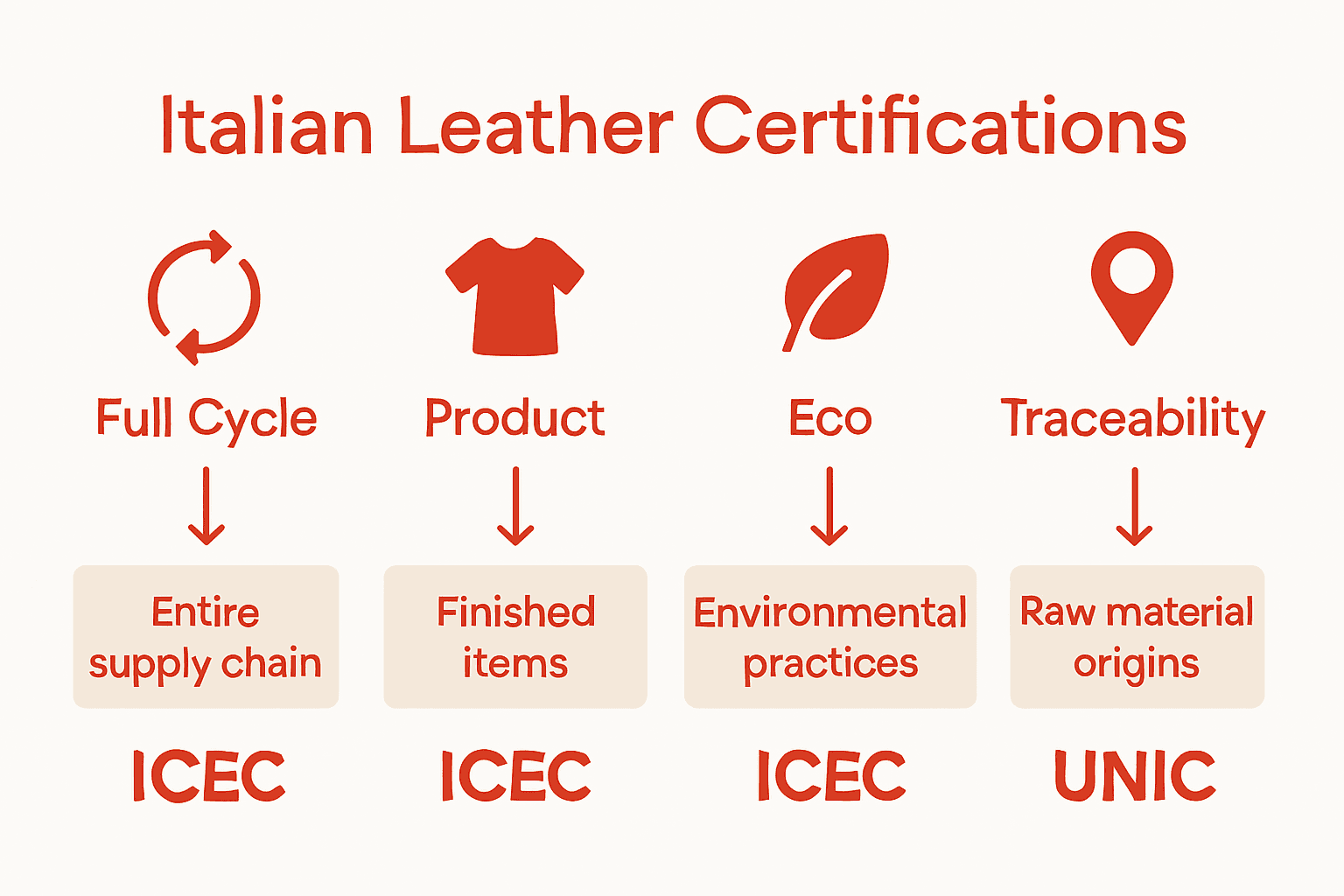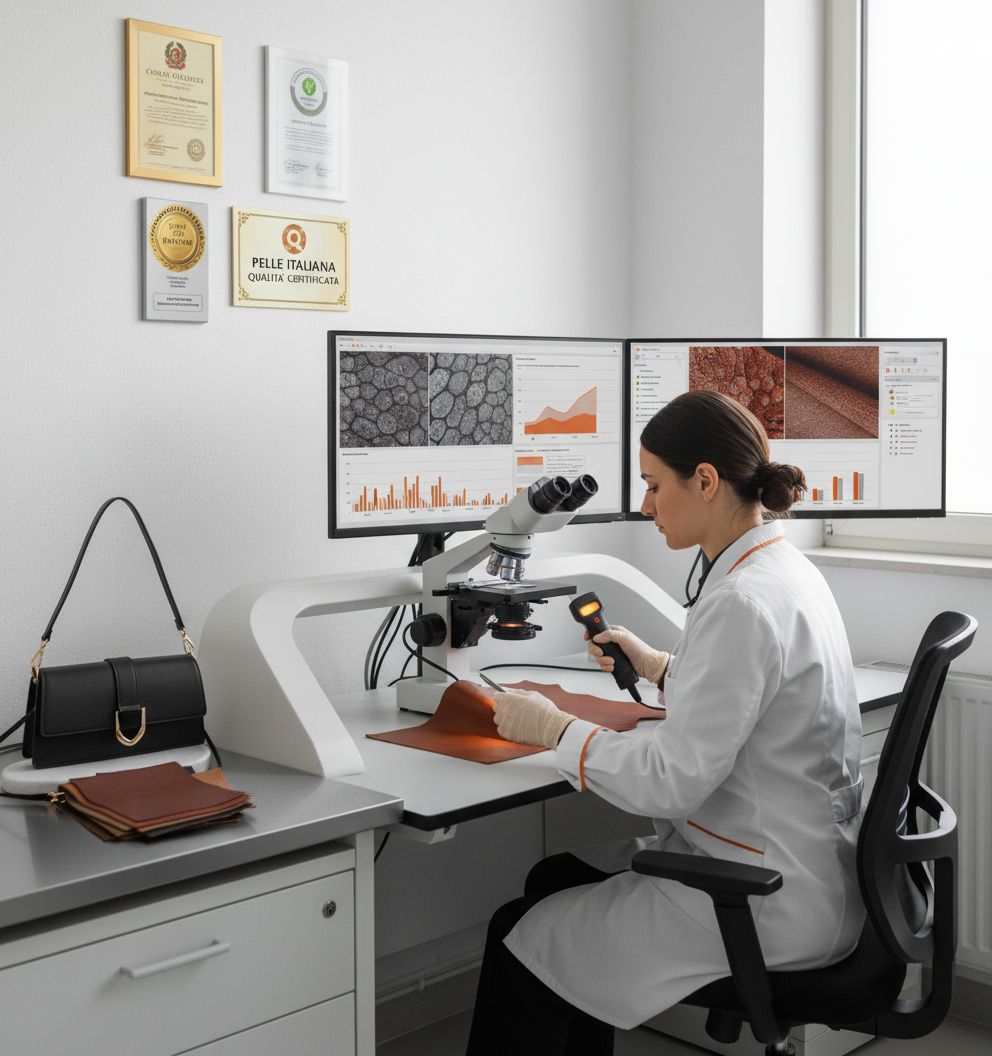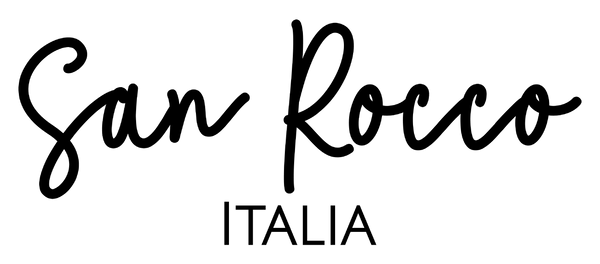
Italian Leather Certification: Complete Guide for 2025
Share
Did you know that over 80 percent of luxury leather goods labeled “Italian” are scrutinized under strict legal and quality standards before reaching the market? For anyone searching for authentic style and lasting value, these certification details matter more than ever. Italian leather goes beyond just a name, with rigorous testing and meticulous documentation ensuring that every piece truly reflects the country’s celebrated tradition of craftsmanship and responsible production.
Key Takeaways
| Point | Details |
|---|---|
| Authenticity Standards | Italian leather certification ensures authenticity and quality through rigorous compliance with standards like UNI EN 16484 and traceability evaluations. |
| Certification Types | There are various certification types, including Made in Italy Full Cycle and Eco-Leather Certification, which guarantee local craftsmanship and sustainable practices. |
| Authentication Methods | Advanced forensic testing, including metal content analysis and chemical composition verification, provides scientific proof of leather’s origin and quality. |
| Legal Compliance | To be labeled as “Made in Italy,” leather goods must adhere to strict legal requirements governing all production stages within Italy. |
Table of Contents
- Defining Italian Leather Certification Standards
- Key Certification Types And Their Meanings
- Authenticity Markers And Testing Methods
- Legal Requirements For Italian Leather Goods
- Common Misconceptions And Buyer Pitfalls
Defining Italian Leather Certification Standards
The landscape of Italian leather certification represents a sophisticated system designed to guarantee authenticity, quality, and ethical production. According to the European Standard UNI EN 16484, leather certification is far more than a simple label—it’s a comprehensive process that ensures the integrity of leather production from origin to final product.
To legally claim “Made in Italy,” leather must meet rigorous standards set by European regulations. The standard specifically mandates that the last two tanning stages must occur within the same country. This requirement ensures that products labeled as Italian leather genuinely represent local craftsmanship and production techniques. Understanding Italian Leather Craftsmanship: Timeless Quality provides deeper insights into these intricate processes.
Key certification requirements include:
- Compliance with UNI EN 16484:2015 standard
- Integration of a quality management system like ISO 9001
- Verification of production origin by authorized bodies like ICEC (Italian Certification and Testing Institute)
- Traceability of leather production stages
- Adherence to sustainable and ethical manufacturing practices
Through these meticulous standards, Italian leather certification protects both consumers and artisans, maintaining the reputation of one of the world’s most prestigious leather industries.
Key Certification Types and Their Meanings
Italian leather certification encompasses a diverse range of specialized certification types designed to validate quality, origin, and ethical production. According to the ICEC (Italian Certification and Testing Institute), these certifications go far beyond simple labeling, providing comprehensive assurance for discerning consumers and industry professionals.
The most prominent certification types include:
Here’s a comparison of the most prominent Italian leather certification types:
| Certification Type | Main Assurance | Overseen By |
|---|---|---|
| Made in Italy Full Cycle | Entire process in Italy Full local craftsmanship |
ICEC (Italian Certification and Testing Institute) |
| Product Certification | Quality and finishing standards | ICEC Third-party bodies |
| Eco-Leather Certification | Sustainable production Eco-friendly processes |
ICEC UNIC Eco-Leather |
| Traceability Certification | End-to-end origin tracking | ICEC Authorised inspectors |
- Made in Italy Full Cycle: Confirms that the entire leather production process occurs within Italy, ensuring complete local craftsmanship
- Product Certification: Validates the quality and characteristics of finished leather products
- Eco-Leather Certification: Recognizes environmentally sustainable leather production methods
- Traceability Certification: Tracks leather production from raw material to final product
Companies like Prodital Leather exemplify this comprehensive approach, holding multiple certifications including UNI EN 16484’s “Leather from Italy – Full Cycle”, ISO 14001 for environmental management, and ISO 9001 for quality standards. Understanding How Italian Leather is Made offers deeper insights into these intricate production processes.
These certifications serve a critical purpose: they protect the reputation of Italian leather by ensuring transparency, sustainability, and uncompromising quality across every stage of production.
 For consumers seeking authentic, ethically produced leather goods, these certifications provide a reliable guarantee of excellence.
For consumers seeking authentic, ethically produced leather goods, these certifications provide a reliable guarantee of excellence.
Authenticity Markers and Testing Methods
Authentic Italian leather is distinguished through a sophisticated array of scientific verification methods that go far beyond traditional visual inspection. Modern certification leverages advanced forensic techniques to guarantee the genuine origin and quality of leather products.
According to Oritain’s forensic testing technology, leather can now be scientifically traced through its molecular composition, providing geolocation-based proof of origin even after tanning and finishing processes. This breakthrough allows for unprecedented transparency in verifying the true source of leather materials.
Key authenticity markers include:
- Metal Content Analysis: The UNI EN 15987 standard requires total tanning metal content (Cr, Al, Ti, Zr, Fe) to be ≤0.1% of dry weight
- Chemical Composition Testing: Verifies eco-friendly production standards
- Forensic Origin Tracking: Scientific methods that map leather’s geographic origins
- Production Chain Documentation: Comprehensive traceability from raw hide to finished product
Understanding the Benefits of Italian Leather Quality highlights how these rigorous testing methods protect consumers and maintain the prestigious reputation of Italian leather craftsmanship. The eco-friendly leather logo, issued by UNIC after ICEC certification, represents the pinnacle of authenticity and sustainable production.

Legal Requirements for Italian Leather Goods
The legal landscape of Italian leather goods represents a sophisticated framework designed to protect the integrity and reputation of one of Italy’s most prestigious industries. According to ICEC certification standards, the definition of “100% Made in Italy” goes far beyond simple geographic labeling, encompassing a comprehensive set of regulatory requirements.
Under Italian law, specifically the DL 135/2009 Article 16 and EU Non-Preferential Origin Regulations, a leather product can only claim “Made in Italy” status if multiple critical production stages occur within Italy. These stages include:
- Design Development: Conceptualization must originate in Italy
- Material Sourcing: Primary materials should preferentially be Italian
- Manufacturing: Core production processes must be completed domestically
- Final Assembly: Completed within Italian borders
These rigorous legal standards ensure that Complete Guide to Spotting Genuine Italian Leather protects consumers from misleading claims and maintains the exceptional quality associated with Italian craftsmanship.
The regulations serve not just as technical requirements, but as a robust mechanism for preserving the heritage and economic significance of Italy’s leather manufacturing sector.
Common Misconceptions and Buyer Pitfalls
Navigating the world of Italian leather purchasing can be complex, with numerous misconceptions that can lead unsuspecting buyers astray. Many consumers mistakenly believe that simply seeing “Made in Italy” guarantees superior quality, when in reality, this label requires extensive verification and specific production standards.
Common misconceptions include:
- Price Equals Quality: Expensive doesn’t automatically mean authentic Italian leather
- Visual Appearance: Surface texture alone cannot confirm genuine Italian leather
- Brand Names: Prestigious labels do not guarantee true Italian production
- Online Images: Digital representations can easily misrepresent leather characteristics
Buyers should be particularly cautious about several critical pitfalls. Cheap imitations often use misleading marketing language, presenting leather-like materials that lack the durability and craftsmanship of genuine Italian leather. Why Invest in Italian Leather: Understanding its Value provides deeper insights into distinguishing authentic products from sophisticated counterfeits.
The most sophisticated buyers understand that true Italian leather is about more than a label—it’s a commitment to exceptional craftsmanship, sustainable production, and generations of artisanal expertise. Always request detailed certification, examine production documentation, and trust reputable sources when making your investment.
Experience Certified Italian Leather with Confidence
Are you worried about falling for misleading labels or questionable claims when shopping for Italian leather goods? You are not alone. Many buyers struggle to identify truly authentic Italian pieces, especially with the complex certification processes and increasing number of imitations. The rigorous standards discussed in our guide, such as “Made in Italy Full Cycle” and forensic traceability, highlight the importance of choosing verified leather crafted by skilled artisans.

At San Rocco Italia, we turn these standards into reality. Our luxury handbags and leather accessories are made from premium full-grain leather and produced by master Italian artisans. Each piece reflects not just traditional craftsmanship but also the transparent, ethical production clients expect. See and feel the difference with timeless designs and guaranteed Italian quality. Embrace confidence in every purchase today, knowing you are investing in authenticity and artistry that stand the test of time. Visit San Rocco Italia now to explore the collection and make your next investment with complete peace of mind.
Frequently Asked Questions
What are the key certification types for Italian leather?
The key certification types for Italian leather include Made in Italy Full Cycle, Product Certification, Eco-Leather Certification, and Traceability Certification. These certifications ensure quality, ethical production, and origin tracking throughout the leather supply chain.
How is the authenticity of Italian leather verified?
The authenticity of Italian leather is verified through scientific testing methods, including metal content analysis, chemical composition testing, forensic origin tracking, and production chain documentation. These methods provide proof of origin and quality.
What legal requirements must be met for a product to be labeled as ‘Made in Italy’?
To be labeled ‘Made in Italy’, a leather product must meet legal requirements, including design development, material sourcing, manufacturing, and final assembly all occurring within Italian borders. This ensures the integrity and quality of Italian craftsmanship.
How can consumers avoid misconceptions when purchasing Italian leather?
Consumers can avoid misconceptions by understanding that price does not always equal quality, surface appearance is not a definitive indicator of authenticity, and that brand names don’t guarantee true Italian production. Always request documentation and certifications to ensure you’re buying genuine products.


